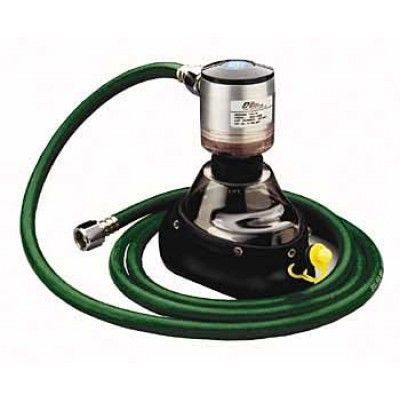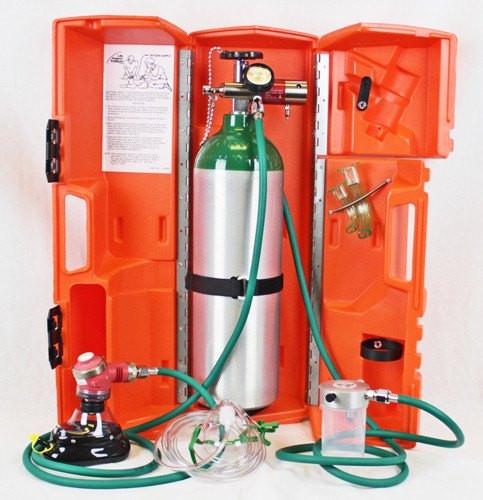Manually Triggered Ventilation Device
Published (updated: ).
Everybody Needs One Of These In Their Truck

A flow-restricted, oxygen-powered ventilation device (FROPVD), also referred to as a manually triggered ventilation device (MTV), is used to assist ventilation in apneic or hypoventilating patients, although these devices can also be used to provide supplemental oxygen to breathing patients. It can be used on patients with spontaneous breaths, as there is a valve that opens automatically on inspiration. When ventilating a patient with a (FROPVD) you must ensure an adequate, constant oxygen supply is available. Once the oxygen source is depleted, the device can no longer be used because it is driven completely by an oxygen source. The (FROPVD) has a peak flow rate of 100% oxygen at up to 40 liters per minute. To use the device, manually trigger it until chest rise is noted and then release. Wait five seconds before repeating. The device must have a pressure relief valve that opens at 60cm of water pressure to avoid over ventilation and trauma to the lungs. The (FROPVD) is contraindicated in adult patients with potential chest trauma and all children. The main components of flow-restricted, oxygen-powered ventilation devices include
- An inspiratory pressure safety release valve.
- A trigger or level positioned to allow both hands to remain on the mask to provide an airtight seal while supporting and tilting the patients head.
- A peak flow rate of 100% oxygen at up to 40 L/min.
- An audible alarm that goes off when the relief valve pressure is exceeded.
On The Plus Side

- Allows for a single rescuer to use both hands to maintain mask to face seal while providing positive pressure ventilation to a patient
- Reduces rescuer fatigue during extended transport times
- Rescuer can easily incorporate jaw thrust into ventilation
Not On The Plus Side
- Requires oxygen to ventilate, however the amount is much less lpm utilization than a bag valve mask running at 15 lpm.
- Typically used on adult patients only
- Requires special unit and additional training for use in pediatric patients
- The rescuer is unable to easily assess lung compliance (because they can’t feel the air going into the lungs)
- high ventilatory pressures may damage lung tissues
What The Science Says

Comparison of an oxygen-powered flow-limited resuscitator to manual ventilation with an adult 1,000-mL self-inflating bag
Background: Positive-pressure ventilation of patients with unprotected airways during cardiopulmonary resuscitation can cause gastric dilation.
Objective: Determine if there is a significant difference in volume delivered to lungs and stomach while using an adult 1,000-mL disposable bag-valve-mask (BVM) device and the oxygen-powered, flow-limited Oxylator EMX resuscitator.
Methods: We used a bench model to simulate a patient with an unprotected airway, consisting of an intubation manikin, lung analog, and simulated lower esophageal sphincter set at an opening pressure of 20 cm H2O. The BVM and the Oxylator were used to provide mask ventilation at a verbally prompted rate of 12 breaths/min.
Results: The volumes delivered with the BVM and the Oxylator to the lungs and stomach were not significantly different: 262 + 112 mL versus 297 + 99 mL and 227 + 199 mL versus 159 + 73 mL, respectively.
Conclusion: Our study found no significant difference between the Oxylator and BVM when comparing tidal volume delivered to lungs and stomach during ventilation of a simulated unconscious nonintubated patient. More research on BVM use and the Oxylator should be done to validate the American Heart Association’s guideline recommendations for ventilating unconscious patients with unprotected airways. Research on gastric dilation during cardiopulmonary resuscitation needs to be done with bench models using manikins that simulate chest excursion, bidirectional airway flow, lung impedance, and gastric compliance.
